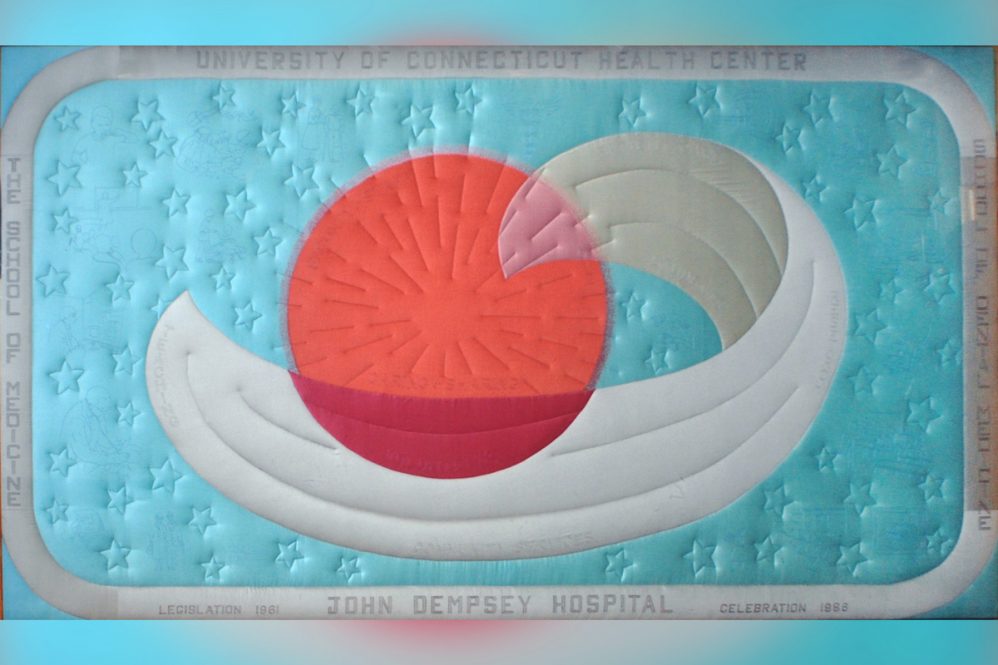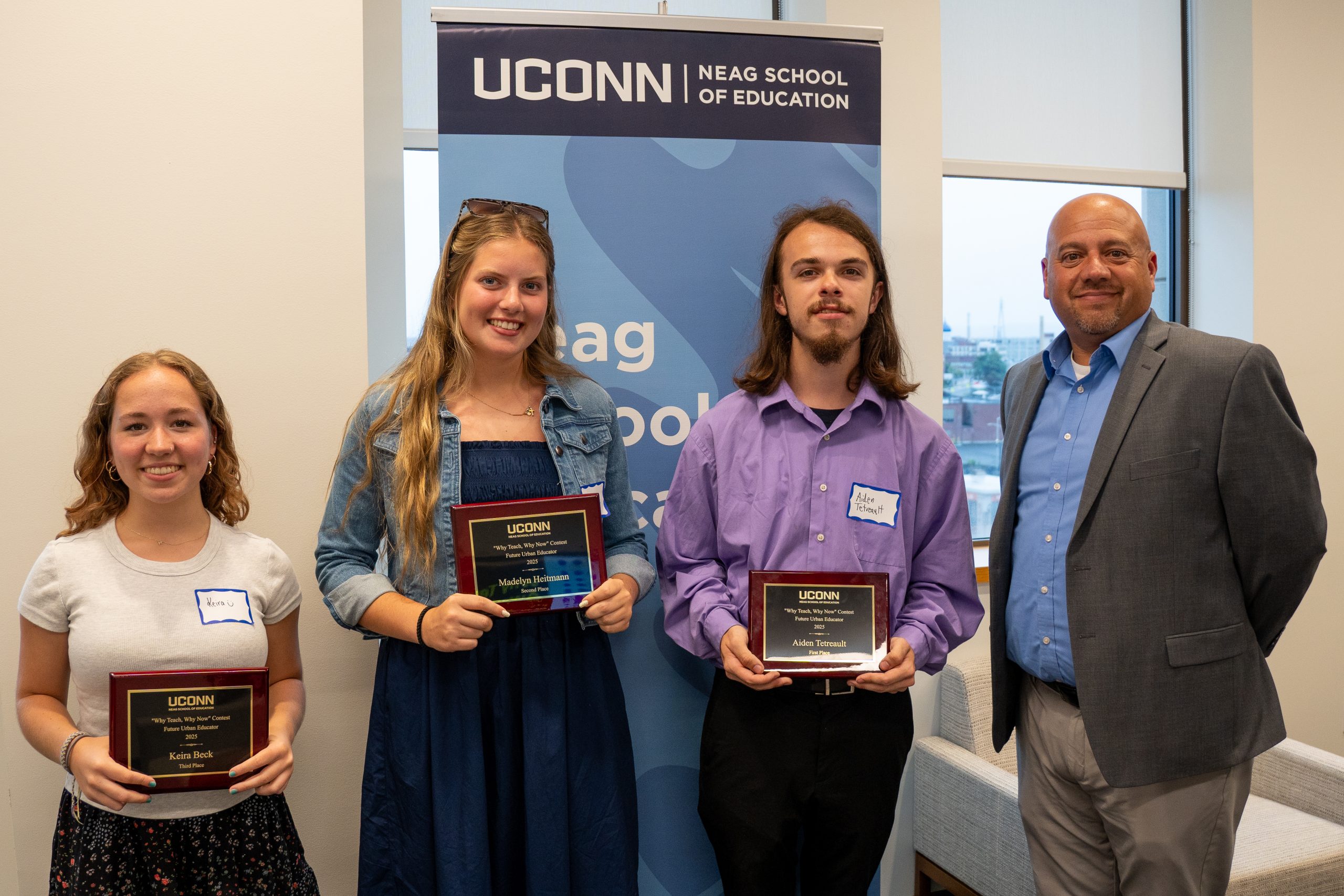“The Auxiliary membership past and present deserves our most profound thanks for a foundational effort so very well done!” — Dr. Peter Deckers
Whether it’s the Creative Child Center, the art collection, a patient and family education center in the Outpatient Pavilion, web cams for premature infants’ isolettes, or even an endowed faculty chair, the UConn Health Auxiliary’s presence will live on at UConn Health long after it disbands this summer.
Since its inception in 1969, the Auxiliary, which earned the nickname “The Good Deed People,” has contributed more than a conservatively estimated $9 million to UConn Health, including decades of scholarships and student awards, the establishment of the UConn Health Auxiliary Patient and Family Education Center, and perhaps most notably, the raising of $900,000 to fund an endowed chair, the Joseph M. Healy Jr. Memorial Chair in Medical Humanities and Bioethics.
The Auxiliary’s fundraising arms over the years included the Connucopia Gift Shop, a Thrift Shop in West Hartford, and the regular presence of outside vendors renting space at UConn Health to offer their wares. Most years, many of the vendors came at the same time for the Auxiliary’s winter holiday and springtime fairs. The pandemic wiped out the vendor sales and shortly before that the thrift shop closed, leaving the gift shop and dwindling membership dues as the only sources of income in recent years.

“The gift shop has always been a primary source of revenue for the Auxiliary, but more importantly, it has become the friendly face of UConn Health to staff and visitors alike,” says Debbie Baril, the Auxiliary’s facilitator and, since 2006, manager of the gift shop.
In a message to the UConn Health Community, Dr. Andy Agwunobi, UConn Health CEO and interim University president, said his leadership team is working on solutions to try to make up for the loss of the gift shop, including consideration of a retail pharmacy in the same area.
“While to many of us the closing of the gift shops will be the most visible and immediately noticeable impact of losing the Auxiliary, the void will be much larger than that,” Agwunobi says. “If you’ve spent any time at UConn Health over the years — as an employee, student, patient, or visitor — chances are you’ve been touched by something the Auxiliary was a part of.”
The contributions have gone beyond direct financial support. UConn Health’s art collection originated as an Auxiliary collection in 1979.
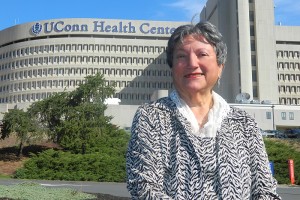
“Getting the art for the hospital was the beginning of trying to make patients more comfortable, to make their hospital stay feel more pleasant, to make it feel like you weren’t in the hospital all the time,” says Irene Engel, who served as the Auxiliary’s facilitator from shortly after her retirement in 1996 through 2018. “We didn’t just want to make it fun and happy for patients, but also fun and happy for faculty and students. That was our goal, to make people want to come to work every day.”
Chris Kaminski, a longtime UConn Health employee and Auxiliary member and past facilitator, says, “As a member, it was rewarding to know the events and activities that I was a part of would support various patient-related programs.”
Ellen Cartun has been an Auxiliary member since 2003, when she started volunteering at the gift shop, and she’s served on the board as treasurer for the last 10 years.
“I have had the opportunity to work with many remarkable and inspiring women during this time,” Cartun says. “I am very proud of all the wonderful programs that the Auxiliary has sponsored as a direct result of our fundraising efforts. It is certainly a sad day to see this all come to an end. We hope to be remembered fondly and as ‘The Good Deed People.’”

In 1977, UConn Health was one of the first state agencies to make on-site child care available to its employees, when the Auxiliary opened the Creative Child Center. Nine years later, after securing a grant and building on campus, the Auxiliary turned the child care center over to UConn Health.
The connection with the Creative Child Center lived on; in 2009, attendees contributed their artwork when the Auxiliary joined the American Mural Project, an effort to create the world’s largest indoor collaborative artwork. It includes a sculpture made of individually painted tongue depressors, hundreds of them the handiwork of Creative Child Center children.
“From its beginning, the Auxiliary was a powerful , reliable consistent engine that supplied needed critical energy to the research, educational and clinical missions of UConn Health and its Schools of Medicine, Dental Medicine and Biomedical Research,” says Dr. Peter Deckers, UConn Health’s executive vice president for health affairs from 2000 through 2007 and medical dean from 1995 to 2007.
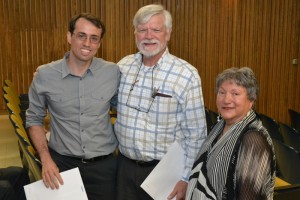
“It truly was an Auxiliary for all people at the Health Center, not just John Dempsey Hospital,” Engel says.
From the start, breaking from the traditional model of a hospital auxiliary consisting of doctors’ wives, the UConn Health Auxiliary welcomed all to be members. At its peak in the mid-90s, its membership was up to 300.
“I think the belief is that the UConn Health Auxiliary consists of ‘the ladies who run the craft fairs twice a year,’ when in fact the Auxiliary has been instrumental in initiating several noteworthy projects at UConn Health.” Baril says. “I think the UConn Health Auxiliary will be remembered as the quiet force that donated over $9 million to this institution.”

Two significant, more recent contributions of note involve what is now the Connecticut Children’s Neonatal Intensive Care Unit at the UConn John Dempsey Hospital. In 2008, the Auxiliary introduced The Family Place at Homewood Suites, a two-bedroom suite dedicated for use by parents who needed a nearby place to stay, for free, while their infant was in the NICU. In 2014, the Auxiliary partnered with the Farmington Rotary Club to provide webcams to allow parents (and others the parents authorize) to see their infant remotely in real time.
Also in 2008, the Auxiliary brought the WHALE car seat safety program to Connecticut. An acronym for “We Have A Little Emergency,” a WHALE kit includes a child safety seat label that provides information about the child for first responders in the event of an accident that leaves the driver and others in the car unresponsive.
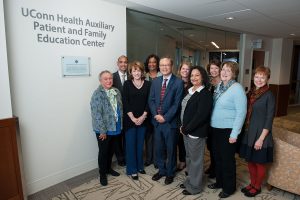
“Many scholarships, awards celebrating meritorious achievements, cutting-edge research tools, academic space refurbishing, even creation of a dedicated endowed chair celebrating the medical humanities, were funded through the efforts of many committed altruistic people guided by the continued input of the time, talent, even personal resources and leadership of true ‘angels’ like Nan Kennedy, Irene Engel, Ellen Cartun , Jeanne Lattanzio, and many others too numerous to name,” Deckers says. “Their efforts were true stewardship of the highest quality. They further assured that the gifts of the Auxiliary were given at just the right time in the right way recognizing the most deserving. These gifts continue to give, and assuredly will have a durable long-term positive impact in the life of the Health Center. The Auxiliary membership past and present deserves our most profound thanks for a foundational effort so very well done!”
Learn more about the UConn Health Auxiliary’s good deeds over the years.
